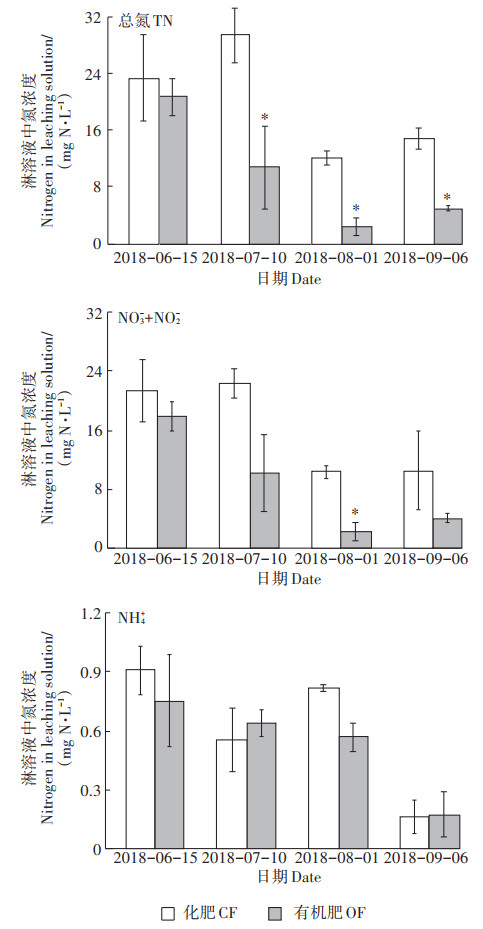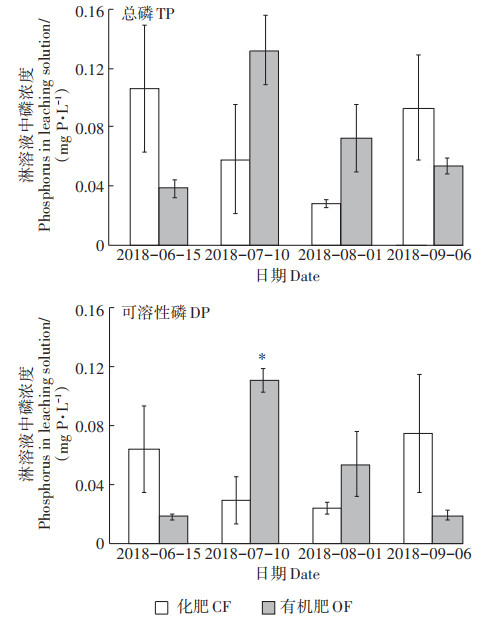2. 云南省生态环境科学研究院, 昆明 650034
2. Yunnan Research Academy of Eco-Environmental Sciences, Kunming 650034, China
农业面源污染是造成地表水体污染的重要污染源,是当前全球面临的主要环境问题之一[1-3]。在农业生产活动中,过量氮、磷、农药以及其他污染物在降水或灌溉过程中通过农田地表径流、淋溶、农田排水和地下渗漏途径进入水体,对河流、湖泊和海湾等生态环境造成破坏,严重威胁饮水安全[4-5]。由于种植业、畜禽水产养殖业和居民生活等氮磷污染物的排放具有随机性,来源和传输过程具有间歇性和不确定性,面源污染的输出受到自然地理、农业管理方式差异的影响较为显著,区域差异性大,空间变异性强,因此对其进行治理相对比较困难[6-8]。
为降低农业面源污染所造成的水体污染,相关防治技术措施已得到广泛研究,目前已经形成了包括农村生活污水和生活垃圾治理,农业废弃物、畜禽粪便资源化利用,以及塘、浜和小河水体修复等一系列颇有成效的技术[9-10]。特别是形成了包括源头控制、迁移过程拦截、养分循环利用、末端治理等系列技术工程措施[11-13]。上述技术及相应的工程措施对于削减农业面源污染负荷具有较好的效果。但是上述技术措施多针对已经发生污染物流失的体系或者只注重某一环节或某一子系统,即“末端治理”的基本逻辑和“重技术轻成本”“重局部轻整体”的技术手段,忽视了农业生态系统的调控功能[14-15],使农村面源污染在传递过程中的众多关键问题仍未得到根本解决。
环水有机农业是指在重要的湖库周边、江河源头区、饮用水源集水区等水环境敏感区域采用有机农业生产方式,实现农业生产与水质保护相结合的一种环境友好型农业模式。有机农业不仅是控制农药和化肥的投入,更注重充分发挥有机农业的整体生态功能[16]。本研究以环水有机农业为技术手段,基于农业生态系统空间格局优化的新视角,探讨通过空间格局及其景观要素耦合作用,充分发挥农业生态系统的生态功能,从而有效实现农业面源污染控制与区域生态环境修复。
1 农田空间格局优化农田是农业生产、养分循环、害虫及天敌滋生繁衍的主要区域,是农业生态系统的主要组成部分,而高产导向的农业集约化生产,导致农业生产中过量使用化肥、农药,使得农业生态功能持续退化[17-18]。Chabert等[19]研究发现非作物生境面积的连接度决定了天敌进入周围作物生境的迁移扩散能力和病虫害防控能力。另一方面农田连接情况也容易控制水分的运移,可以实现养分的多级利用,同时过滤、渗透、吸收、滞留、沉积等作用也可减少径流携带的污染物质[20]。例如,河岸植被缓冲带必须沿河流连续状分布,否则间断的缓冲带会使缓冲效果降低[21]。因此,农田空间布局过程中,应有效保证生态空间结构的连接度。当农田景观要素污染负荷过大时,应充分考虑增加景观要素组成部分,从而延长养分的空间循环路径,降低环境污染风险。例如在南方丘陵地带,畜禽废水由于污染负荷量过高不能直接施用于果园,可通过养猪- 沼气-养鱼-果树四位一体的物质循环和能量梯级利用的综合生态农业模式,利用沼气和鱼池(水藻-鱼)延长营养物质迁移的空间路径,降低果园的污染负荷,在控制农业面源污染的同时,提高经济效益[22]。Landis[23]研究发现在农田廊道中开辟林地,可以有效增加益鸟数量,减少害虫数量,也能够大幅提升面源污染阻控能力。在旱地条件下,通过挖塘贮水养鱼创造水生环境,利用水田构建生态湿地,不仅可使捕食害虫的蛙类成倍增加[24],大幅减少农用化学品投入,而且湿地存水可以回灌,实现养分多次循环利用,有效减少农业面源污染对水环境造成的污染[25]。因此,农田生产布局上应注意提高景观要素类型的结构异质性,构建农田生态景观生境多样性可采取水陆微生态系统、林地农田、草地农田等交织共存的策略,增加永久性植被的比例,从而进一步提升生态系统的稳定性。
2 景观要素生态功能的强化与有效配置通过景观要素生态功能强化,可以充分发挥农田生态格局与景观要素的耦合作用。研究发现非作物生境面积侵占会加剧病虫害暴发,非作物生境面积与异质化越高,农业生态系统中天敌的多样性越高,病虫害暴发的可能性越低[26]。国际生物防治组织建议非作物生境面积的比例至少要占到5%,当其生境面积达15% 时,才能充分实现农业生态系统中天敌的控制功能[27]。因此,在不影响粮食生产的前提下,应尽量提高非作物生境面积的比例与异质化。非作物生境是天敌的主要寄宿区域,贮存着丰富的天敌资源,可以有效减少化学农药投入量。另外,非作物生境,特别是缓冲带位置和布局的确定是非作物生境发挥生态功能的先决条件。从地形角度来看,缓冲带一般布置在下坡位置,与地表径流的方向垂直。对于长坡可以沿等高线增设缓冲带数量,以削减水流的能量。特别对于水环境敏感区域,应提高缓冲带宽度。国内外学者普遍认为河岸缓冲带宽度对污染物质的去除和水质的提高起到关键作用,提出了河岸植被缓冲带的最小宽度值。例如,在太湖流域利用狗牙根作为缓冲带植物,减少菜地施肥过程中径流造成的农业面源污染。当缓冲带宽度为1.5 m,菜地与缓冲带面积比为100∶11时,对总氮(TN)、总磷(TP)的拦截效果可分别达到56.1%和85.9%[28]。景观要素的合理改造可以显著提高系统生态功能。非作物生境应因地制宜、合理改造以提升其吸收、阻控效率,包括生态沟渠、前置库等措施的应用。例如,在太湖流域稻田种植系统中,通过沟壁种植狗牙根、黑麦草和沟底种植空心菜来构建生态拦截性沟渠,对径流中总氮、总磷的拦截率达到48.4%和40.5%[29]。在平原河网地区通过前置库技术对降雨初期总氮、总磷的去除率可分别高达70.5%和84.6%[30]。
3 农艺措施优化空间格局优化与景观要素耦合作用的同时,通过优化农艺措施,可以进一步减少肥料,特别是化肥的投入。秸秆还田、废弃物的堆肥等农业废弃物的资源化利用措施,一方面提高养分的循环利用,延长营养物质的空间迁移路径,例如,通过秸秆还田,可以使营养物质再次进入作物生长循环,而非直接进入环境中,可减少稻麦周年的氮磷径流损失量7%~8%[31];另一方面,秸秆或堆肥等农业废弃物还田可以减少化肥的投入,改良土壤,提升土壤质量[32]。过量施用化肥容易造成土壤酸化,破坏土壤结构,加剧水土流失风险。通过合理施用肥料,增加绿肥、豆科作物等氮素替代品,适时轮作套作,可提高氮、磷等养分的空间多层利用,减少养分流失。例如,乔俊等[33]在太湖流域连续8年的定位试验结果表明,与稻麦轮作农户常规施肥模式相比,稻-紫云英、稻-黑麦草和稻-休闲轮作下,绿肥替代可以使径流总氮损失减少18%~45%。通过物理防治与生物防治相结合的方式,特别是植物源农药替代化学合成农药的方式,可以从源头上减少化学投入品的施用。例如,植物次生代谢产物或苏云金杆菌、类产碱假单胞菌等生物防治制剂具备环境友好、生态安全和对靶标不易产生抗性等优点,可以代替化学农药实现对蝗虫的防治,从源头上有效控制化学农药施用量[34]。
4 案例研究优化空间格局与景观要素联合措施的应用应根据区域地形、地貌、降雨等自然条件,因地制宜,提升农田生态系统整体功能。研究区域松华坝流域位于昆明市以北,横跨嵩明县和盘龙区,海拔1 920~2 800 m,流域面积629.8 km2。流域下游的松华坝水库距昆明市区16 km。年平均降雨量987.1 mm,年平均温度14.2 ℃,年内降雨分布极不均匀,80% 以上的降雨集中在雨季5月至10月。案例以该流域科庄村有机农场与常规农场为研究对象,探讨环水有机农业通过空间格局优化与景观要素耦合作用对农业面源污染控制的实现途径。从农田空间布局上,有机农场主要通过构建生态岛和保护田埂等非作物生境两个措施来提高农田生态系统的稳定性。通过对闲置山丘等非作物区域植被的保护与恢复,构建生态岛屿,为害虫天敌以及食物链构建提供生境条件。同时对田埂杂草进行保留,使整个农场能够贯联,打通生态廊道。生态岛与田埂植物等非作物生境面积约占耕作面积的5%~10%,植物种类主要为当地物种,包括雀麦(Bromus japonicus Thunb. ex Murr.)、白茅(Imperata cylindrica(L.)Beauv.)、荩草(Arthraxon hispidus(Thunb.)Makino)、黑麦草(Lolium perenne L.)等,共21科,34属。
通过生态岛建设等生境恢复措施,生态岛及田埂草丛的动物多样性显著提高,如表 1所示。生态岛构建等生境修复措施显著增加了农场鸟类的种类(P < 0.05),有机种植区共观察到鸟类53种,隶属于6目、23科;相比之下,常规种植区共观察到鸟类21种,隶属于5目、13科。另外,从网捕动物种类来看,经生境恢复的有机种植基地的田埂动物共4纲8目21种,显著高于周边常规蔬菜田的1纲3目5种(P < 0.05)。有机农场菜地大中型土壤动物共有7纲14目21科27种,显著高于常规蔬菜田内调查到的大中型土壤动物(2纲3目3科3种,P < 0.05)。表明有机农场生境的调控显著提高了农田动物物种数,增强了生态系统的生态功能。同以往研究一致,有机农场注重生境的保护与改善,其最突出的生态功能即提高生态系统稳定性,能够有效地控制病虫害[35]。另外,Crowder等[36]研究也发现,有机农业通过提高农田生物多样性,有效控制病虫害,从而减少化学农药的投入。本研究发现有机农场中蜘蛛、瓢虫等天敌动物种类的提高,能够有效控制病虫害,通过结合有效的生物防治,即同时采用生物源农药替代化学合成农药可以有效减少化学农药投入2.2~2.5 kg·hm-2(表 2)。
|
|
表 1 有机农田与常规农田动物物种组成 Table 1 Composition of animal species in the organic and conventional farmland of Songhua dam |
|
|
表 2 有机农田与常规农田农药投入情况 Table 2 Pesticide input in the organic and conventional farmland of Songhua dam |
此外,通过以上措施可以有效控制氮、磷排放。有机农场首先将尾菜与羊粪、鸽子粪等资源化利用制成有机肥,替代尿素、复合肥等化肥,循环利用尾菜的氮、磷养分,延长面源污染迁移路径,显著降低氮、磷流失风险。本研究监测了2018年5月至2019年5月有机农场与常规农场中氮、磷淋溶情况,其中,2018年雨季6—9月的氮、磷淋溶特征见图 1、图 2。结果表明:有机肥和化肥施用后,淋溶液总氮浓度(以N计)分别为2.45~20.72 mg·L-1和12.10~29.43 mg·L-1,氮淋失量分别为每年10.55 kg·hm-2和18.47 kg·hm-2,施用有机肥每年可以显著减少7.92 kg·hm-2氮淋溶至环境中(P < 0.05);有机肥和化肥施用后,淋溶液总磷浓度(以P计)分别为0.038~0.132 mg·L-1和0.028~0.106 mg·L-1,磷淋失量分别为每年0.06 kg·hm-2和0.10 kg· hm-2,施用有机肥每年可显著减少0.04 kg·hm-2磷淋溶至环境中(P < 0.05)。这与Vincent等[37]的研究是一致的,主要与有机肥氮素、磷素矿化速度相对较慢有关[8]。另外,农田作为营养元素消纳场所,按一年3~4季蔬菜计算,消纳有机肥54~72 t·hm-2,可减少氮、磷排放量691~921 kg·hm-2和707~942 kg·hm-2,减少化肥投入4 555~6 073 kg·hm-(2 N∶P∶K=18∶6∶24),总体上可减少820~1 093 kg·hm-2氮和273~364 kg·hm-2磷进入环境。

|
*表示有机肥与化肥差异显著(P < 0.05)。下同 * indicate significant differences between OF and CF(P < 0.05). The same below 图 1 有机肥与化肥施用下氮素淋溶特征 Figure 1 Nitrogen leaching character with organic fertilizer(OF) and chemical fertilizer (CF) |

|
图 2 有机肥与化肥施用下磷素淋溶特征 Figure 2 Phosphorus leaching character with organic fertilizer(OF)and chemical fertilizer(CF) |
Macfadyen等[38]通过农田食物网结构稳定性控制病虫害,以动物物种数表征有机农业生态系统服务功能。本研究也发现有机农业通过景观格局优化与景观要素耦合的措施,可以显著提高农田物种数量,使农田生态系统具备更稳定的食物网结构,能够更有效控制病虫害,这不仅从源头上减少了农药和营养物质的流失,而且通过延长面源污染的迁移路径,减少氮、磷排放。另外,Macfadyen等[38]研究还表明有机农业等保护性农业措施,也可以提高土壤质量,增加土壤持水能力,从而减少水土流失及氮、磷流失风险[38]。
5 结论通过优化农田生态系统空间格局和景观要素,采用合理的农艺措施,可以充分发挥农田生态系统的生态功能,有效控制病虫害,不仅能从源头有效控制农药和化肥的投入,而且能够延长面源污染的迁移途径,阻控氮、磷等营养物质的流失,从而有效控制农业面源污染,改善区域环境质量。
| [1] |
Ortolani V. Land use and its effects on water quality using the BASINS model[J]. Environmental Earth Sciences, 2014, 71(5): 2059-2063. DOI:10.1007/s12665-013-2607-5 |
| [2] |
Rosendorf P, Vyskoc P, Prchalova H, et al. Estimated contribution of selected non-point pollution sources to the phosphorus and nitrogen loads in water bodies of the Vltava River basin[J]. Soil and Water Research, 2016, 11: 196-204. DOI:10.17221/15/2015-SWR |
| [3] |
杨林章, 吴永红. 农业面源污染防控与水环境保护[J]. 中国科学院院刊, 2018, 33(2): 168-176. YANG Lin-zhang, WU Yong-hong. Prevention and control of agricultural non-point source pollution and aquatic environmental protection[J]. Bulletin of Chinese Academy of Sciences, 2018, 33(2): 168-176. |
| [4] |
Xie H, Dong J, Shen Z, et al. Intra-and inter-event characteristics and controlling factors of agricultural nonpoint source pollution under different types of rainfall-runoff events[J]. Catena, 2019, 182: 104105. DOI:10.1016/j.catena.2019.104105 |
| [5] |
Ostermann A, Siemens J, Welp G, et al. Leaching of veterinary antibiotics in calcareous Chinese croplands[J]. Chemosphere, 2013, 91: 928-934. DOI:10.1016/j.chemosphere.2013.01.110 |
| [6] |
Ouyang W, Yang W, Tysklind M, et al. Using river sediments to analyze the driving force difference for non-point source pollution dynamics between two scales of watersheds[J]. Water Research, 2018, 139: 311-320. DOI:10.1016/j.watres.2018.04.020 |
| [7] |
Zhang T, Yang Y H, Ni J P, et al. Best management practices for agricultural non-point source pollution in a small watershed based on the AnnAGNPS model[J]. Soil Use and Management, 2020, 36(1): 45-57. DOI:10.1111/sum.12535 |
| [8] |
Wang L, Zhao X, Gao J, et al. Effects of fertilizer types on nitrogen and phosphorous loss from rice-wheat rotation system in the Taihu Lake region of China[J]. Agriculture, Ecosystems and Environment, 2019, 285: 106605. DOI:10.1016/j.agee.2019.106605 |
| [9] |
孙笑蕾, 胡正义, 刘莉, 等. 基于肥水资源化的河网区镇域农业面源污染控制系统的构建: 以太湖地区新建镇为例[J]. 生态与农村环境学报, 2019, 35(5): 582-592. SUN Xiao-lei, HU Zheng-yi, LIU Li, et al. Pollutant reduction systems for controlling agricultural non-point-source pollution in town district of river network area based on reuse of waste water and nutrient: A case study in Xinjian Town, Taihu Lake[J]. Journal of Ecology and Rural Environment, 2019, 35(5): 582-592. |
| [10] |
Xia L Z, Liu G H, Ma L, et al. The effects of contour hedges and reduced tillage with ridge furrow cultivation on nitrogen and phosphorus losses from sloping arable land[J]. Journal of Soils and Sediments, 2014, 14(3): 462-470. DOI:10.1007/s11368-013-0824-x |
| [11] |
杨林章, 施卫明, 薛利红, 等. 农村面源污染治理的"4R" 理论与工程实践: 总体思路与"4R" 治理技术[J]. 农业环境科学学报, 2013, 32(1): 1-8. YANG Lin-zhang, SHI Wei-ming, XUE Li-hong, et al. Reduce-Retain-Reuse-Restore technology for the controlling the agricultural non-point source pollution in countryside in China: General countermeasures and technologies[J]. Journal of Agro-Environment Science, 2013, 32(1): 1-8. |
| [12] |
Mendes L R D, Tonderski K, Iversen B V, et al. Phosphorus retention in surface-flow constructed wetlands targeting agricultural drainage water[J]. Ecological Engineering, 2018, 120: 94-103. DOI:10.1016/j.ecoleng.2018.05.022 |
| [13] |
Kasak K, Kill K, Parn J, et al. Efficiency of a newly established instream constructed wetland treating diffuse agricultural pollution[J]. Ecological Engineering, 2018, 119: 1-7. DOI:10.1016/j.ecoleng.2018.05.015 |
| [14] |
Palm C, Blanco-Canqui H, Declerck F, et al. Conservation agriculture and ecosystem services: An overview[J]. Agriculture, Ecosystems and Environment, 2014, 187: 87-105. DOI:10.1016/j.agee.2013.10.010 |
| [15] |
Sandhu H, Wratten S D, Cullen R, et al. Organic agriculture and ecosystem services[J]. Environmental Science and Policy, 2010, 13(1): 1-7. DOI:10.1016/j.envsci.2009.11.002 |
| [16] |
王磊, 席运官, 肖兴基, 等. 发展环水有机农业控制农业面源污染的政策与建议[J]. 农业环境科学学报, 2017, 36(8): 1590-1594. WANG Lei, XI Yun-guan, XIAO Xing-ji, et al. Development of organic agriculture in watershed areas to control agricultural nonpoint source pollution[J]. Journal of Agro-Environment Sciences, 2017, 36(8): 1590-1594. |
| [17] |
Rusch A, Chaplinkramer R, Gardiner M M, et al. Agricultural landscape simplification reduces natural pest control: A quantitative synthesis[J]. Agriculture, Ecosystems and Environment, 2016, 221: 198-204. DOI:10.1016/j.agee.2016.01.039 |
| [18] |
Karp D S, Chaplinkramer R, Meehan T D, et al. Crop pests and predators exhibit inconsistent responses to surrounding landscape composition[J]. Proceedings of the National Academy of Sciences of the United States of America, 2018, 115(33): 201800042. |
| [19] |
Chabert A, Sarthou J P. Practices of conservation agriculture prevail over cropping systems and landscape heterogeneity in understanding the ecosystem service of aphid biocontrol[J]. Agriculture, Ecosystems and Environment, 2017, 249: 70-79. DOI:10.1016/j.agee.2017.08.005 |
| [20] |
Wu J, Lu J. Landscape patterns regulate non-point source nutrient pollution in an agricultural watershed[J]. Science of the Total Environment, 2019, 669: 377-388. DOI:10.1016/j.scitotenv.2019.03.014 |
| [21] |
Correll D L. Principles of planning and establishment of buffer zones[J]. Ecological Engineering, 2005, 24(5): 433-439. DOI:10.1016/j.ecoleng.2005.01.007 |
| [22] |
刘明庆, 席运官, 龚丽萍, 等. 东江源头区"猪-沼-果-鱼"生态农业模式关键技术与面源污染控制分析[J]. 生态与农村环境学报, 2010, 26(Z1): 58-63. LIU Ming-qing, XI Yun-guan, GONG Liping, et al. Key techniques and non-point source pollution control effect of "pig-biogas-fruit-fish" eco-agriculture model in headwaters of Dongjiang River[J]. Journal of Ecology and Rural Environment, 2010, 26(Z1): 58-63. DOI:10.3969/j.issn.1673-4831.2010.z1.012 |
| [23] |
Landis D A. Designing agricultural landscapes for biodiversity-based ecosystem services[J]. Basic and Applied Ecology, 2017, 18: 1-12. DOI:10.1016/j.baae.2016.07.005 |
| [24] |
高东, 何霞红, 朱书生. 利用农业生物多样性持续控制有害生物[J]. 生态学报, 2011, 31(24): 7617-7624. GAO Dong, HE Xia-hong, ZHU Shu-sheng. Sustainable management on pests by agro-biodiversity[J]. Acta Ecologica Sinica, 2011, 31(24): 7617-7624. |
| [25] |
Zhao H Y, Piccone T. Large scale constructed wetlands for phosphorus removal, an effective nonpoint source pollution treatment technology[J]. Ecological Engineering, 2020, 145: 105711. DOI:10.1016/j.ecoleng.2019.105711 |
| [26] |
Tscharntke T, Klein A M, Kruess A, et al. Landscape perspectives on agricultural intensification and biodiversity-ecosystem service management[J]. Ecology letters, 2005, 8(8): 857-874. DOI:10.1111/j.1461-0248.2005.00782.x |
| [27] |
Boller P F. Presidential campaigns: From George Washington to George W Bush[M]. Oxford: Oxford University Press, 2004.
|
| [28] |
李伟, 王建国, 王岩, 等. 用于防控菜地排水中氮磷污染的缓冲带技术初探[J]. 土壤, 2011, 43(4): 565-569. LI Wei, WANG Jianguo, WANG Yan, et al. Pre-test of buffer zones for preventing nitrogen and phosphorus pollution from vegetable drainage[J]. Soils, 2011, 43(4): 565-569. |
| [29] |
杨林章, 周小平, 王建国, 等. 用于农田非点源污染控制的生态拦截型沟渠系统及其效果[J]. 生态学杂志, 2005, 24(11): 1371-1374. YANG Lin-zhang, ZHOU Xiao-ping, WANG Jian-guo, et al. Ecological ditch system with interception function and its effects on controlling farmland non-point pollution[J]. Chinese Journal of Ecology, 2005, 24(11): 1371-1374. DOI:10.3321/j.issn:1000-4890.2005.11.026 |
| [30] |
张永春, 张毅敏, 胡孟春, 等. 平原河网地区面源污染控制的前置库技术研究[J]. 中国水利, 2006(17): 14-18. ZHANG Yong-chun, ZHANG Yi-min, HU Meng-chun, et al. Studies on front damming technology for NPS pollution control of river network in plain areas[J]. China Water Resources, 2006(17): 14-18. DOI:10.3969/j.issn.1000-1123.2006.17.008 |
| [31] |
刘红江, 郑建初, 陈留根, 等. 秸秆还田对农田周年地表径流氮、磷、钾流失的影响[J]. 生态环境学报, 2012, 21(6): 1031-1036. LIU Hong-jiang, ZHENG Jian-chu, CHEN Liu-gen, et al. Effects of straw-returning on annual overland runoff NPK loss in farmland[J]. Ecology and Environmental Sciences, 2012, 21(6): 1031-1036. |
| [32] |
王磊, 杨静, 席运官, 等. 有机耕作方式对我国南方典型土壤质量影响的评价[J]. 生态与农村环境学报, 2017, 33(6): 564-570. WANG Lei, YANG Jing, XI Yun-guan, et al. Assessment of quality of soils under organic farming in south China[J]. Journal of Ecology and Rural Environment, 2017, 33(6): 564-570. |
| [33] |
乔俊, 颜廷梅, 薛峰, 等. 太湖地区稻田不同轮作制度下的氮肥减量研究[J]. 中国生态农业学报, 2011, 19(1): 24-31. QIAO Jun, YAN Ting-mei, XUE Feng, et al. Reduction of nitrogen fertilizer application under different crop rotation systems in paddy fields of Taihu area[J]. Chinese Journal of Eco-Agriculture, 2011, 19(1): 24-31. |
| [34] |
石旺鹏, 谭树乾. 蝗虫生物防治发展现状及趋势[J]. 中国生物防治学报, 2019, 35(3): 307-324. SHI Wang-peng, TAN Shu-qian. Current status and trend on grasshopper and locust biological control[J]. Chinese Journal of Biological Control, 2019, 35(3): 307-324. |
| [35] |
Chabert A, Sarthou J. Conservation agriculture as a promising tradeoff between conventional and organic agriculture in bundling ecosystem services[J]. Agriculture, Ecosystems & Environment, 2020, 292: 10685. |
| [36] |
Crowder D W, Northfield T D, Strand M R, et al. Organic agriculture promotes evenness and natural pest control[J]. Nature, 2010, 466(7302): 109-112. DOI:10.1038/nature09183 |
| [37] |
Vincent A, Fleury P. Development of organic farming for the protection of water quality: Local projects in France and their policy implications[J]. Land Use Policy, 2015, 43: 197-206. DOI:10.1016/j.landusepol.2014.10.020 |
| [38] |
Macfadyen S, Gibson R, Polaszek A, et al. Do differences in food web structure between organic and conventional farms affect the ecosystem service of pest control[J]. Ecology Letters, 2009, 12(3): 229-238. DOI:10.1111/j.1461-0248.2008.01279.x |
 2021, Vol. 38
2021, Vol. 38




